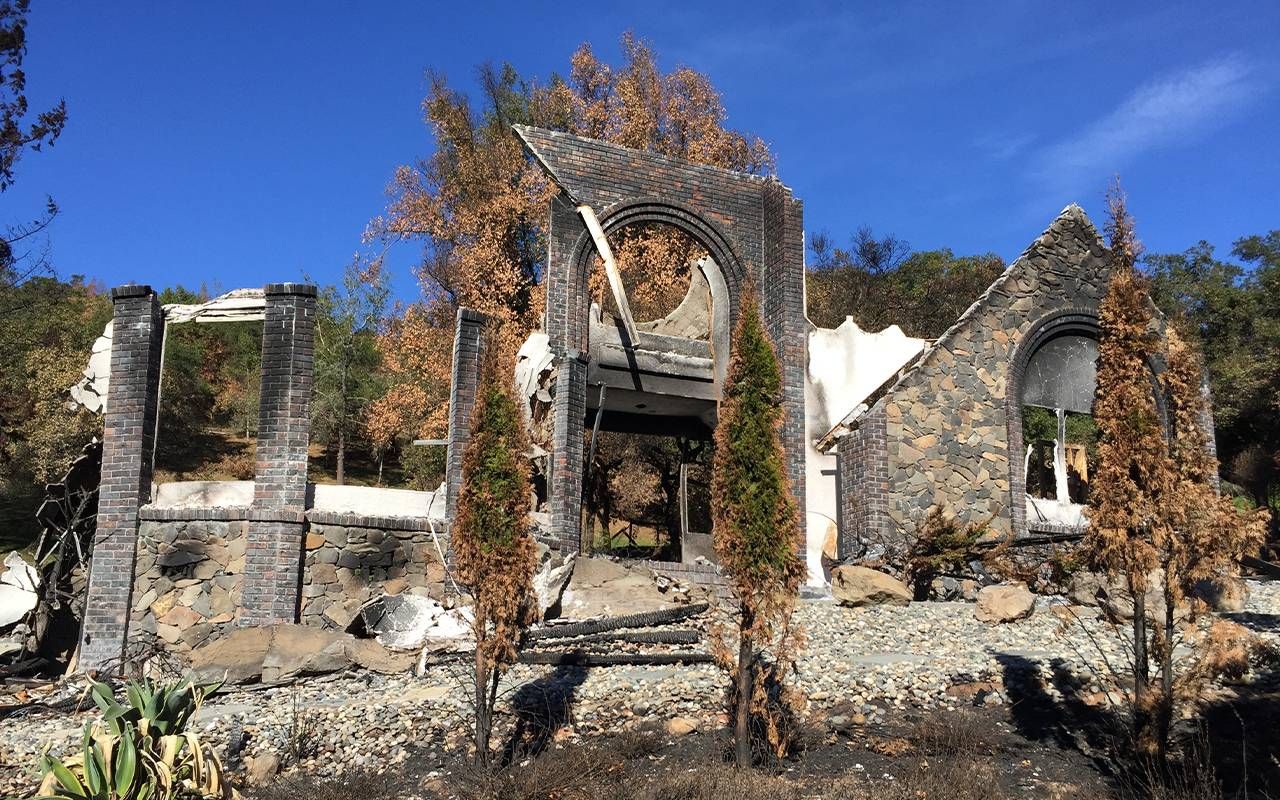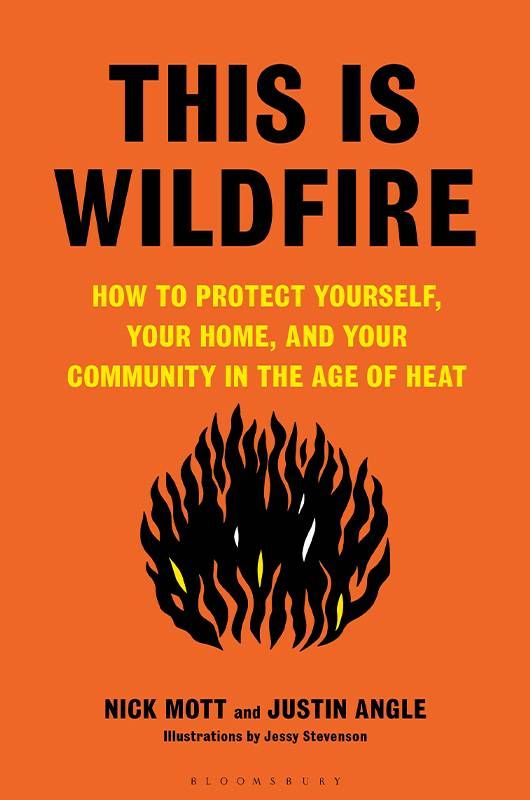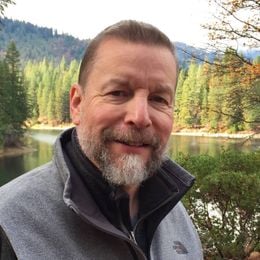Wildfire Is a National Threat. What Can You Do?
A new survival guide provides some useful tips and more
"This is not the new normal; there's nothing about this that is normal."
—Andrew Pershing, vice president for science at Climate Central

Climate activist Bill McKibben may have summed up the risks presented by this record-hot summer better than anyone: "This week makes clear we're in the gnarly rapids now and hearing the roar of the waterfall around the bend," he wrote in his newsletter of July 16.
It's been hard to ignore the impacts of an overheated planet this summer. From crushing heat waves in the southwest to catastrophic flooding in the northeast, climate has captured the headlines on a daily basis.
Phoenix went a solid month with high temperatures of 110 degrees Fahrenheit or more. Flooding in McKibben's home state of Vermont was judged worse than the flooding caused by Tropical Storm Irene, which destroyed or damaged nearly a dozen of Vermont's iconic covered bridges in 2011.
The Fires This Time
And then there were the fires. By early August, wildfires had swept across more than 30 million acres of Canada. As smoke from those fires drifted south and choked major American cities, the U.S. northeast had a wake-up call: wildfires are not just something that happens "out west."
Even Hawaii, another region not typically seen as "fire country," saw an August wildfire claim more than 100 lives and destroy irreplaceable historic buildings on the island of Maui.
So it's timely that journalist Nick Mott and business professor Justin Angle are publishing their guide to "living with wildfire" in years to come. Their book, "This Is Wildfire: How to Protect Yourself, Your Home, and Your Community in the Age of Heat," is scheduled for publication on August 29.
More than a practical "survival guide" for fire country, the book is a kind of almanac of wildfire, including a deep dive into the natural and human history of fire, its benefits as well as its risks.
What the Experts Say
Mott, a 34-year-old freelance journalist and podcaster, and Angle, a 48-year-old associate professor at the University of Montana College of Business, met recently with Next Avenue to talk about climate change and its perils. Their responses were edited for length and clarity.
"There's just more potential for fire built into the system, and that potential is driven higher as the climate warms."
Next Avenue: July of this year was the hottest month on record, worldwide. What implications does that have for wildfire?
Justin Angle: Higher temperatures mean more fires. There are a few drivers that are connected to climate. The first is the amount of moisture in the system; more heat means drier landscapes, drier vegetation, longer periods of dryness and hotter days. So you've got not only the heat in the system, but also a source of fuels — both alive and dead fuel on the ground — that is just drier and more ready to ignite. There's just more potential for fire built into the system, and that potential is driven higher as the climate warms.
Many in the Northeast got their first real taste of wildfire smoke this spring, from the fires burning all across Canada. So it seems like an important point here is that you don't have to live in "fire country" for wildfire to be a health threat.
Angle: Yeah, the research on smoke is pretty clear and the body of work is growing. It's important for folks to realize that you gotta limit your exposure. Looking outside for a visual cue is one thing but know where to find air quality ratings for your community.
Nick Mott: Smoke seems like it's sort of an equal opportunity thing, it sucks everybody in, but it affects those with preexisting conditions the hardest. And also those who are working outside who are often many of the most marginalized people in society.
Older folks, especially with other conditions, have much higher risk. And those folks in particular should definitely make sure to keep windows shut. A HEPA air filter is wonderful. But even a simple box fan with a furnace filter taped over it is better than nothing. That can go a long way to having some healthy, breathable air in the house.
Where Should I Retire?
What specific recommendations would you have for people who are planning for retirement and trying to figure out what their dream destination is?
Mott: People retiring are thinking about where you can go that's safe for the future, right? And that's becoming increasingly unclear; that smoke in the Northeast shows exactly that. There are areas that are much more prone to fire than others, so don't build a new home in the forest with trees everywhere — probably not a great idea. In fact, statistics do show that a great number of new developments in the west is happening exactly there, in what's known as the wildland-urban interface (WUI).
Now, if your home is in a fire-prone area, there's a lot you can do to keep it safe. That comes down to changing your roof. Don't have a wood shingle roof. Same with a wood fence. Cover up openings and weaknesses into the house like eaves and soffits. Get rid of flammable vegetation directly next to the house and thin out trees immediately adjacent to your house that could spread fire and ladder fuel up into the canopy.
"(Reducing) fire risk doesn't mean you have to necessarily sacrifice on these aesthetic components of your home."
What, and get rid of all of our beautiful landscaping?
Mott: Exactly. You've got to rethink it and it can still be beautiful.
Angle: And a benefit of a lot of those landscaping decisions is that if they're done right, they can be lower-maintenance, which is a thing particularly for somebody who's a little older and doesn't have the mobility or strength to do things they used to do. The fire risk doesn't mean you have to necessarily sacrifice on these aesthetic components of your home. You can actually create an area surrounding you that is lower maintenance and aesthetically appealing as well.
And if those measures aren't adequate, what's the next line of defense?
Mott: Talk with your family, your loved ones or your neighbors about evacuation plans. Where are you gonna go? Who are you gonna call? How are you gonna get in touch with each other? And how are you gonna get out of the neighborhood? Think down to the detail of how you're gonna get out of there. And get that go-bag together. It doesn't take long. You need your medications, maybe some snacks and food, some water bottles — basic stuff that you need to survive for maybe a few days.
Justin, since you're the business professor: we're seeing insurance companies pull out of states like California and Florida that are already seeing severe climate impacts. Is this what will eventually slow down development in these vulnerable areas?
Angle: Potentially, because if you can't get insurance on a home, it's really difficult to get a mortgage on a home. And most people need financing to make a home purchase. At the same time, the insurance companies — their whole model is driven by risk assessment. There is a profit motive, and their job is to price risk accordingly. So when you see insurers starting to pull out of certain markets, that should be a red flag to anybody interested in looking at living in one of those markets.
"When you see insurers starting to pull out of certain markets, that should be a red flag"
So, are you guys walking your talk with all this? Being in Montana, it seems likely that you live in the danger zone.
Angle: If a fire were to come toward Missoula from the north, my house is one of the first stops on its way south. So that's a concern for sure. I'm not super-interested in selling the home at the moment due to fire risk, but it certainly is something that, as I've dug into this issue more over the last few years through the writing of this book, that I gotta put my money where my mouth is in many ways, with regard to my own home and making sure it's safe, and helping my neighbors understand the risks within our community.
What Has Changed?
So, what would you say is either the biggest misperception or least-understood aspect of wildfire in the U.S. today?

Mott: Climate's not the only driver of this modern age of fires; so is our legacy of fire suppression, which is a century long. And so is development into the wildland urban interface, where we're building our homes. So, that said, fire is sometimes good. We need it, especially low-intensity fire as would've occurred naturally.
And two, we can change what we're doing to live with fire differently and sustainably, like we can make our homes and communities more resilient to flames. And this is what the whole aim of the book is: to help people understand how to live with fire.
Angle: We got really good at fighting fires and did it with laser focus for a really long period of time, and the public adapted its expectation to that. And [now] we're seeing these megafires and gigafires [where] it doesn't matter how good you are at fighting fire and how many resources you mobilize, you're not gonna be able to put these fires out. [The authors define a "megafire" as one that burns more than 100,000 acres; a "gigafire" is a one-million-acre fire.]
What Should We Do?
So where do we go from here with the big picture? You're essentially saying we need to live with wildfire because (a) the problem is not going away and (b) some of the solutions are divisive.
Angle: Somebody who's approaching retirement might have the kind of intellectual bandwidth to get into the complexity of the problem that is wildfire. It's common to hear calls for more logging and some more logging is needed. Whereas a lot of folks on the left reflexively hear logging — or, in the vernacular or the Forest Service, "mechanical treatments" — and they reflexively say no.
Some combination of solutions is needed both at the individual level, at the policy level and at the community level. And I think we have to step out of our filter bubbles, our partisan bubbles and kind of embrace the complexity of the issue, because it's gonna take a bunch of different types of solutions to chart a path forward that is better than where we're at right now.
Mott: Yeah. You know, this is a time — especially after COVID — when we've been isolated more and more in our little bubbles. But a wildfire is a community threat. It's not just my house and then your house. It's our community. We need to talk with one another, helping one another understand the risk and help one another get the work done. And doing that can address a lot more than just wildfire.
Where to learn more about your personal fire risk
AirNow, headed by the Environmental Protection Agency. A repository of air quality information searchable by ZIP code.
Firewise USA, run by the National Fire Protection Association, offers standards and practices to help make your home more resilient to wildfire. It also has resources about communities already taking part in their program, success stories and more.
Fire Adapted Communities Learning Network is a resource for anyone living in a community vulnerable to wildfire. It offers workshops, lessons and creative ideas about fireproofing home and community. It is also a means to connect with other individuals and communities also grappling with resilience.
Risk Factor offers projections of wildfire risk to your home going out to 30 years. It also has information about flood and heat risks. Search by your home address and get a good picture of what’s coming your way.
Source: "This Is Wildfire"

Read More

